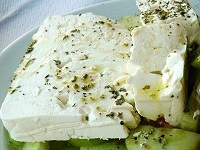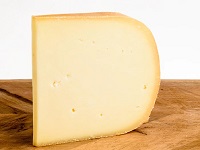Dry Riesling Spätlese (Germany)
Riesling is the most planted wine grape in Germany.
It is used to produce dry, semi-dry and sweet white wines, sparkling wines, and dessert wines.
Dry Riesling Spätlese Flavors
Citrus, Apple, Pear, Peach, and Pinapple are typical Riesling flavors, with hints of Herbs and delicate Floral notes, almost perfumed, with a little Steel in the aftertaste.
Lemon |
Lime |
Apple |
Apple |
Pear |
Peach |
Nectarine |
Pineapple |
Orange |
Flowers |
Herbs |
Steel |
Dry Riesling Spätlese Profile
Riesling Spätlese Trocken (Dry) is aromatic, fruity, almost perfumed, with good acidity:
| SUGAR: | Dry (3 g/l) |
| BODY: | Medium |
| FRUIT: | Medium |
| ACIDITY: | Medium - High |
| ALCOHOL: | 12-13% ABV |
| Serving temperatures: 8-10°C (46-50°F) Off-Dry 6-8°C (43-46°F) | |
Dry Riesling Spätlese Food Pairing
Riesling Spätlese Trocken (Dry) is very food friendly.
German. International. Asian. Vegetarian.
Antipasti |
Vegetables |
Asparagus |
Ham |
Fish |
Sushi |
Chicken |
Pork |
Excellent Pairings
Vegetables. Asparagus.Fried or Baked Fish.
Sashimi. Sushi. Nori Rolls. Gravlax.
Roasted Chicken. Chicken Wings.
Roast Pork with Mustard Sauce.
Lightly Smoked Meat.
Pork. Ham. Turkey.
Chinese Food. Dim Sum. Thai Noodles.
Cheeses
Creamy Cheese. Brie. Camembert. Emmental. Muenster.
The Ideal Glass for Dry Riesling Spätlese
A Tulip Shaped Glass with a slightly smaller bowl can be suitable for various dry white wines.

|
The glass guides the wine to the center of your mouth, avoiding the sides where acidity is less pleasant.
A smaller bowl also helps to serve smaller quantities, and keep the wine cold. It also helps if you hold the glass by the stem! |
Dry Riesling Spätlese Cheese Pairing
Dry Riesling Spätlese is known for its crisp and fruity profile. It pairs well with a variety of cheeses.
Opt for cheeses with moderate saltiness and creaminess to balance the Dry Riesling Spätlese's acidity.
Add fruits (grapes, apples, pears), nuts (almonds, walnuts), or a light drizzle of honey to enhance the pairing.
Fresh and Mild Cheeses
Goat Cheese (Chèvre): The tanginess complements the subtle fruit notes in Dry Riesling Spätlese.
Feta: Its delicate flavor pairs well with the wine's lightness.
Ricotta: Especially good if served with a drizzle of honey or fresh fruits.
Soft Cheeses
Brie: The creamy texture and mild flavor work beautifully with Dry Riesling Spätlese.
Camembert: Similar to Brie but with slightly more earthiness.
Chaource: Soft with a bitter nutshell flavor. A little on the salty side.
Semi-Hard Cheeses
Gruyère: Mildly nutty and sweet, enhancing the wine's subtlety.
Manchego: A classic Spanish pairing, especially younger Manchego, which is less intense.
Asiago: Lightly aged Asiago adds a complementary tang to the cheese.
Blue Cheeses (for contrast)
Robiola has a delicate, tangy flavor that pairs well fresh and light wines with good acidity.
If You Like Dry Riesling Spätlese
You May Also Like:
About Riesling
Riesling thrives best in cool climates, where it can ripe into the late fall. In hot climates, Riesling generally loses its fine, delicate flavors.
Riesling is in many ways opposite to Chardonnay. Good Riesling is fresh and sour with medium fullness, moderate alcohol, delicate aromas, and no oak.
To appreciate Riesling, a certain tolerance for acid should be worked up. Riesling has a much more exciting aroma profile than Chadonnay, and it also possesses great elegance and finesse.
Dry Riesling is primarily a food wine. Alone, the wines may seem a little sour.
The best Rieslinges come from Germany, Alsace in France, Austria, Northern Italy, Australia, and New Zealand.
You can read more about Riesling world wide at Riesling Regions.
Riesling Quality Hierarchy
Germany defines these quality Riesling wines (Qualitätswein mit Prädikat or QmP):
Riesling Kabinett
Riesling Kabinett is the lightest Riesling style.
Kabinett wines range from dry (Trocken 4-9 g/l sugar) to off-dry (Halb trocken 12-18 g/l sugar).
More mineral than fruity it pairs Sushi, Seafood, Veggies and Asian Cuisine.
Riesling Spätlese
Spätlese means "Late Selected". This Riesling is more concentrated and therefore has medium body.
Riesling Spätlese wines are richer than Kabinett wines because the grapes contain more sugar at late harvest. Spätlese wines can be off-dry (Halb trocken 12-18 g/l sugar) or dry (Trocken 4-9 g/l sugar).
Riesling Spätlese pairs Seafood, Shellfish, White Meat (Pork), Smoked Meat and Fish.
Riesling Auslese
Auslese means "Selected". Auslese Riesling grapes are hand selected from the most ripe bunches in late autumn.
Auslese wines are sweeter than Spätlese wines (50 g/l sugar). These wines are produced from hand-picked very ripe grapes that have more sugar than Spätlese.
Riesling Auslese wines pair rich food, foie gras and strong cheeses.
The high sugar ratio makes them great aging wines.
Riesling Beerenauslese
Beerenauslese means "Berry (Grape) Selected".
Theese wines are basically produced from hand picked grapes that have been infected by the Botrytis bacteria (Noble Rot) that dries out the grapes and concentrates the sugar.
Beerenauslese wines are dessert wines (100 g/l sugar).
The high sugar ratio makes them great aging wines.
Riesling Trockenbeerenauslese
Trockenbeerenauslese means "Dry Berry (Grape) Selected".
Trockenbeerenauslese wines are produced from individual selected Beerenauslese grapes.
Trockenbeerenausleses are some of the greatest sweet wines in the world (200 g/l sugar).
The high sugar ratio makes them great aging wines.
Riesling Eiswein
Eiswein means "Ice wine".
Eiswein is a sweet dessert wine made from grapes that have been picked when frozen and pressed when frozen. True Eiswein must be picked in the middle of the night, after two days of frost.
The high sugar ratio makes them great aging wines.











